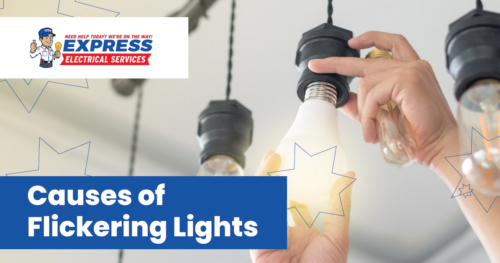

Light fixtures flickering intermittently can be a frustrating household problem. This comprehensive guide will delve into the common electrical causes of flickering light fixtures and equip you with the knowledge and troubleshooting steps to restore your lights to their steady glow. Understanding why your lights are flickering, and how to approach fixing it is crucial in order to prevent bigger and more costly problems later down the line. We’ll explore common electrical issues, from loose connections to faulty wiring, and provide actionable steps to diagnose and resolve the flickering. This article is structured to help you pinpoint the exact cause, whether it’s a simple fix or more extensive work needing a professional. We’ll guide you through a systematic approach to isolate the problem, starting with basic checks and proceeding to more in-depth inspections.
Identifying the Flickering Pattern
Understanding the Flicker
Understanding the pattern of your flickering lights is the first step in finding the source of the problem. Does the light flicker constantly or intermittently? Does it seem to pulse or dim? Does it flicker at regular intervals? A consistent pattern might indicate a specific issue like a loose connection in a fixture or a faulty bulb. An inconsistent pattern can point to more complex problems like a tripped circuit breaker or a strained electrical circuit.
Preliminary Inspection Checklist
Before delving into electrical diagnostics, conduct a preliminary inspection. Check the bulb itself for any visible damage or signs of burnout, as a simple bulb replacement might be the solution. Examine the fixture’s wiring connections to see if any wires are loose or showing signs of damage. A quick visual inspection might uncover an easy solution to avoid costly or risky repairs later on.
Assessing the Frequency and Duration of the Flicker
Note the frequency and duration of the flicker. Is it a brief interruption or a sustained dimming? Recording this data will be helpful in narrowing down possible causes and identifying a potential issue. It can give clues to whether the issue is a recurring issue or a sudden problem, affecting the diagnostic approach.
Observing the Environment
Consider the environment around the light fixture. Is there any potential interference or stray currents present? Nearby appliances or equipment, or nearby storms can also cause an intermittent problem that seems related to the electrical circuit.
Assessing Wiring Connections
Examining the Connections and Junction Boxes
Carefully examine all wiring connections, paying close attention to the junction boxes where wires meet. Loose or corroded connections are common culprits. Look for signs of corrosion, exposed wires, or discoloured insulation. If any connections are damaged, they could lead to the light flickering intermittently, or other issues throughout your home.
Testing for Loose Connections
Tighten or reconnect any loose wires or connections to ensure proper electrical contact. Using appropriate tools, ensure each connection is secured tightly. A simple tightening of a connection could often restore the normal operation of your lights. If this is ineffective, the next steps may involve more technical solutions.
Checking Circuit Breaker and Fuses
Inspect your electrical panel to ensure the circuit breaker associated with the light fixture is not tripped. A tripped circuit breaker can easily cause the light fixtures to flick.
Investigating Possible Short Circuits
If loose connections don’t fix the issue, suspect a potential short circuit within the wiring. Check for any signs of overheating, damaged insulation, or excessive current flow. A short circuit can cause the intermittent flickering and other safety issues.
Evaluating Electrical Components
Investigating Faulty Bulbs or Ballast
Faulty light bulbs or ballasts are potential causes. Start by replacing the bulb with a new one of the correct type and wattage to rule this out. Faulty components can lead to intermittent flickering issues that you might not have expected.
Evaluating the Switchgear
Examine the switchgear for any issues. Poor connections or damage in the switchgear could result in problems with light fixtures.
Troubleshooting with a Multimeter
Employ a multimeter to test the voltage and current in the affected circuit. This method will help identify if the voltage is fluctuating or if there is a short circuit.
Assessing Power Quality
Power surges or fluctuations can also cause intermittent flickering. Consider using surge protectors to prevent such disruptions, especially in areas prone to power outages or instability.
Considering Non-Electrical Factors
Checking for Interference from Other Devices
Check for interference from other electrical devices in the vicinity. A malfunctioning appliance can disrupt the electrical flow, causing intermittent light flicker.
Inspecting the Fixture’s Attachment Points
Look for loose connections or vibrations within the fixture’s attachment points, which can cause intermittent issues.
Observing any Loose Fixtures
Look for any looseness or vibration in the fixture. Shaky fixtures can cause the lights to flicker due to unsteady wiring. If you notice the light fixtures are loose, try to tighten them to fix the problem.
Investigating Environmental Factors
Weather conditions such as strong winds, which can cause vibrations and structural issues that affect the electrical system, can sometimes cause flickering issues.
Additional Troubleshooting Steps
Using a Circuit Tester
Employ a circuit tester to check for continuity in the wiring and to isolate problem areas, allowing you to pinpoint the location of the issue.
Consulting a Professional Electrician
If you are not comfortable with electrical work, consulting a qualified electrician is essential to rule out more complex electrical problems.
Taking Preventive Measures
Taking preventive measures, such as using surge protectors and regularly inspecting your electrical system, can help avoid further issues in the future.
How can I test the connections in my light fixture wiring?
A circuit tester can be used to check the wiring connections for continuity and identify any loose connections. If a connection is not continuous, there’s a possibility of a break in the electrical path. Using a multimeter is another method that can help detect potential issues by measuring voltage and current flow. Always exercise caution when working with electricity, and if you’re unsure, consult a qualified electrician for assistance.
What should I do if I can’t find the cause of the flickering?
If you can’t isolate the cause, it’s best to consult a licensed electrician. They have the expertise and tools to diagnose complex electrical problems that might involve more than a simple fix. They can inspect and isolate possible issues and recommend appropriate solutions for various conditions.
Can environmental factors cause light fixtures to flicker?
Yes, environmental factors such as strong winds, vibration, and extreme weather conditions can potentially cause loose wiring or connections, or create some interference that results in an intermittent flicker. If you suspect these factors, try adjusting fixtures or making temporary repairs that address the vibration or looseness.
How can I prevent future flickering light fixture problems?
Regular inspections of your electrical system can help prevent future problems. Inspecting wiring, connections, and components can help you identify potential issues before they escalate to more complex situations. Using surge protectors is also helpful. They can offer protection from power surges which might cause unexpected flickering issues.
In conclusion, troubleshooting flickering light fixtures involves a systematic approach that considers both electrical and non-electrical factors. By identifying potential problems such as loose connections, faulty wiring, or tripped breakers, you can effectively restore normal operation. Remember, safety is paramount. If you are not comfortable working with electricity, consult a qualified electrician. For further assistance, check out our comprehensive guide to light fixture maintenance available on [website address].